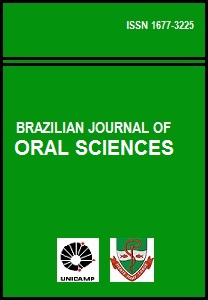Abstract
Palatal rugoscopy, or palatoscopy, is the process by which human identification can be obtained by inspecting the transverse palatal rugae inside the mouth. Aim: This study evaluated a digital method for human identification using palatoscopy, by comparing photographs of the palate against the images of cast models of the maxilla photographed with and without highlighting of the palatal rugae. Methods: Condensation silicone impressions were made from the upper arches of 30 adult subjects of both genders and their palates were then photographed. The first impression was made with heavy silicone, the second impression with light silicone, and then the models were cast in improved type IV dental stone. The casts were photographed, the palatal rugae of each one were highlighted with a pencil, and then the models were photographed again. Using a free image-editing software, the digital photographs were overlapped over the images of the palatal rugae of the models with and without highlighting of the palatal rugae, in order to identify the pairs. Results: The result of overlapping the digital photographs with the images of the models without highlighted palatal rugae resulted in 90% positive identification. For the overlapping of the digital photographs with the images of models with highlighted palatal rugae, there was 100% positive identification. Conclusions: The digital method evaluated in this study was proven effective for human identification.The Brazilian Journal of Oral Sciences uses the Creative Commons license (CC), thus preserving the integrity of the articles in an open access environment.
Downloads
Download data is not yet available.

